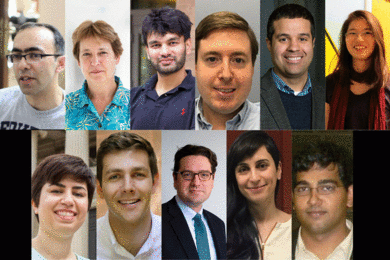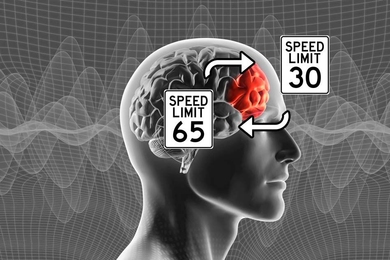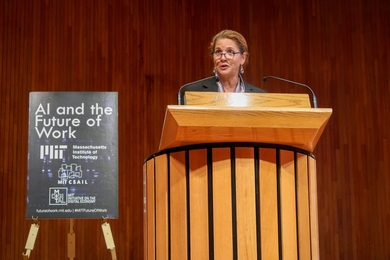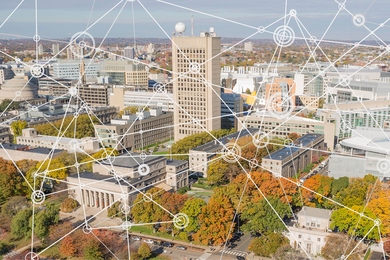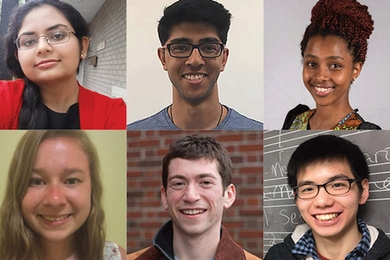Sound and technology unlock innovation at MIT
Cross-disciplinary projects at MIT probe the technological and aesthetic limits of sound.
Building site identified for MIT Stephen A. Schwarzman College of Computing
Headquarters would replace Building 44, forming an “entrance to computing” near the intersection of Vassar and Main streets.
3Q: Aleksander Madry on building trustworthy artificial intelligence
A recent MIT symposium explores methods for making artificial intelligence systems more reliable, secure, and transparent.
Deep-learning technique reveals “invisible” objects in the dark
Method could illuminate features of biological tissues in low-exposure images.
Inside "The Laughing Room"
An artificial intelligence-powered laugh track amuses and unsettles in interactive installations by Jonny Sun.
Reproducing paintings that make an impression
CSAIL's new RePaint system aims to faithfully recreate your favorite paintings using deep learning and 3-D printing.
MIT Open Learning launches Center for Advanced Virtuality
The new center will explore how MIT can use virtual reality and artificial intelligence and other technologies to better serve human needs.
Student group explores the ethical dimensions of artificial intelligence
MIT AI Ethics Reading Group was founded by students who saw firsthand how technology developed with good intentions could be problematic.
How the brain switches between different sets of rules
When you slow down after exiting the highway, or hush your voice in the library, you’re using this brain mechanism.
I think, therefore I code
Senior Jessy Lin, a double major in EECS and philosophy, is programming for social good.
Artificial intelligence summit addresses impact of technology on jobs and global economy
Speakers at the summit included Massachusetts Secretary of Labor Rosalin Acosta and former Google chairman Eric Schmidt.
A bottom-up view of the state
Embedded with street-level bureaucrats, political theorist Bernardo Zacka reveals the complex moral landscape civil servants must navigate.
Bridge to the future of engineering
The School of Engineering’s faculty leadership weigh in on what the MIT Stephen A. Schwarzman College of Computing will mean for their students and faculty.
The many interfaces of computing
A roundup of MIT student research projects offers a glimpse of where computing is going next.
